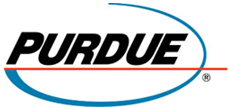
Purdue Pharma
USINFO | 2013-08-02 10:36

Purdue Pharma L.P., is a privately held pharmaceutical company founded by physicians and now located in Stamford, Connecticut. In its early years, Purdue was known for its antiseptic product, Betadine Solution, and its Senokot laxatives. Today, it is best known for its pain-treatment products, MS Contin and OxyContin, but it has also branched into other areas such as oncology and nutraceuticals.
History
Purdue Pharma is a privately held company, founded in 1892 by John Purdue Gray and George Bingham in Manhattan. In 1952, the company was sold to Raymond and Mortimer Sackler, and ten years later it relocated to Yonkers, NY. Over the course of the years, the company expanded offices to New Jersey and Connecticut.In 1991, the current entity, Purdue Pharma L.P., formed . They are the leaders of the industry when it comes to pain management. As of 2010, it employed about 1,350 people.[1]
Structure
The company's different branches include Purdue Pharma L.P., The Purdue Frederick Company, Purdue Pharmaceutical Products L.P., and Purdue Products L.P. The company's manufacturing takes place at three different sites, Purdue Pharmaceuticals L.P., a plant located in Wilson, North Carolina; The P.F. Laboratories Inc. in Totowa, New Jersey; and Rhodes Technologies L.P. in Coventry, Rhode Island. Purdue Pharma L.P. also has research labs in Cranbury, New Jersey. OxyContin is currently distributed throughout the U.S., Canada, and Mexico. Distribution takes place from the P.F. Laboratories Inc. in Totowa, New Jersey.
Controversy
Purdue Pharma is a leading manufacturer of opiate pain medications such as hydromorphone, oxycodone, fentanyl, codeine, and hydrocodone. It is widely known for the production of drugs such as MS Contin, Oxycontin, and Ryzolt. In 1972, Contin (a controlled drug-release system) was developed. In 1984, its extended-release formulation of morphine, MS Contin, was released. In 1996 its extended-release formulation of oxycodone, OxyContin, was released.[1]The controversy behind the company emerged as a result of the drugs that they manufactured and how they carried high potential for abuse by drug abusers, and people with a history of addiction. The most commonly abused medications that the company produces are MS Contin and OxyContin. Both can be abused by crushing, chewing, snorting, or injecting the dissolved product. This is a significant risk to the abuser because it can result in overdose and death. Drug-seeking tactics that addicts undergo to obtain the medication will include “doctor shopping”, which is visiting a number of different physicians to obtain additional prescriptions, and refusal to follow up with appropriate examinations. Along with the high potential for abuse among people without prescriptions, there is also a risk for physical dependency and tolerance for patients that are prescribed them. Nevertheless, strong analgesic drugs remain indispensable to patients suffering from severe acute and cancer pain.[2]
When Oxycontin was released in 1996, it was thought to have lower abuse potential than immediate-release oxycodone because of its time-release properties. However, at the start of 2000, widespread reports of OxyContin abuse surfaced. The results obtained from a proactive abuse surveillance program called Researched Abused, Diversion, and Addicition-Related Surveillance (RADARS [3]) sponsored by Purdue Pharma L.P. pronounced Oxycontin and hydrocodone the most commonly abused pain medications.[4]
The goal out of all of this is to hope that there are tighter prescribing practices, rather than a ban. When Oxycontin was first released in 1996, "This medicine has been very helpful," said Dr. James Everett of Weymouth, a cancer specialist affiliated with South Shore Hospital. "There are other shorter-acting pain drugs, but they have more side effects, including the potential for liver damage if given in excess dose."[5] This shows that Oxycontin does have a benefit associated with it, and if deemed appropriate by one's doctor, it can provide life changing pain relief. Joe Levy of Apopka said he took 240 milligrams of OxyContin for three months and did not become addicted. "I don't know how I would have survived without it," he said. "Please don't intimidate the doctors, to a certain point, from prescribing OxyContin and make people suffer needlessly."[6] "Please be aware valid pain patients such as myself have great concern," said Fred Brown, who said he has used OxyContin and other therapies to treat pain caused by failed back surgeries.[6] OxyContin sales were $2.8 billion in 2011. [7]
Oxycontin-related lawsuits
Purdue has been involved in measures against prescription drug abuse, particularly of Oxycontin. In 2001, Connecticut Attorney General Richard Blumenthal issued a statement urging Purdue to take action regarding abuse of Oxycontin; he noted that, while Purdue seemed sincere, there was little action being taken beyond "cosmetic and symbolic steps."[8] After Purdue announced plans to reformulate the drug, Blumenthal noted that this would take time, and that "Purdue Pharma has a moral, if not legal, obligation to take effective steps now that address addiction and abuse even as it works to reformulate the drug."[9] The company has since implemented a comprehensive program designed to assist in detection of the illegal trafficking and abuse of prescription drugs without compromising patient access to proper pain control.In May 2007 the company pleaded guilty to misleading the public about Oxycontin's risk of addiction, and agreed to pay $600 million in one of the largest pharmaceutical settlements in U.S. history. Its president, top lawyer, and former chief medical officer pleaded guilty as individuals to misbranding charges, a criminal violation, and agreed to pay a total of $34.5 million in fines.[10][11] In addition three top executives were charged with a felony and sentenced to 400 hours of community service in drug treatment programs.[12]
On October 4, 2007 Kentucky officials sued Purdue because of widespread Oxycontin abuse in Appalachia. A lawsuit filed by Kentucky then-Attorney General Greg Stumbo and Pike County officials demanded millions in compensation.[13]
Share this page



















